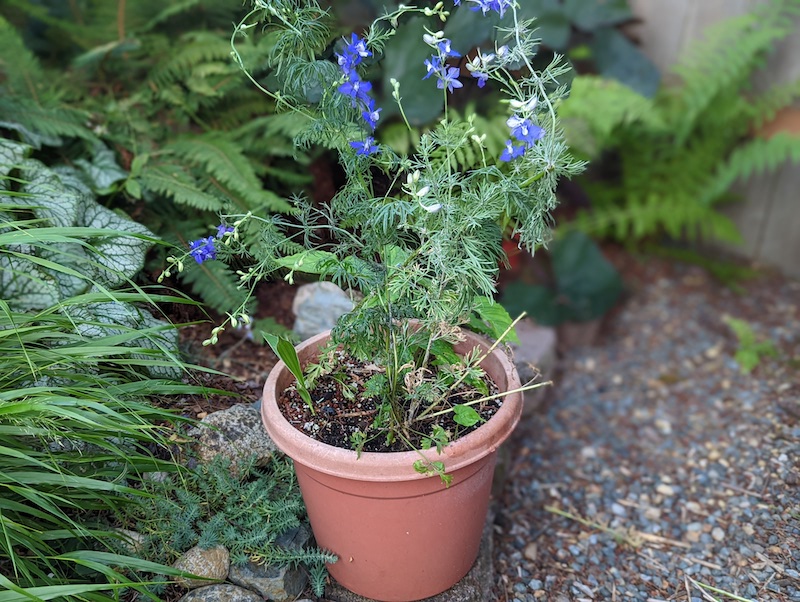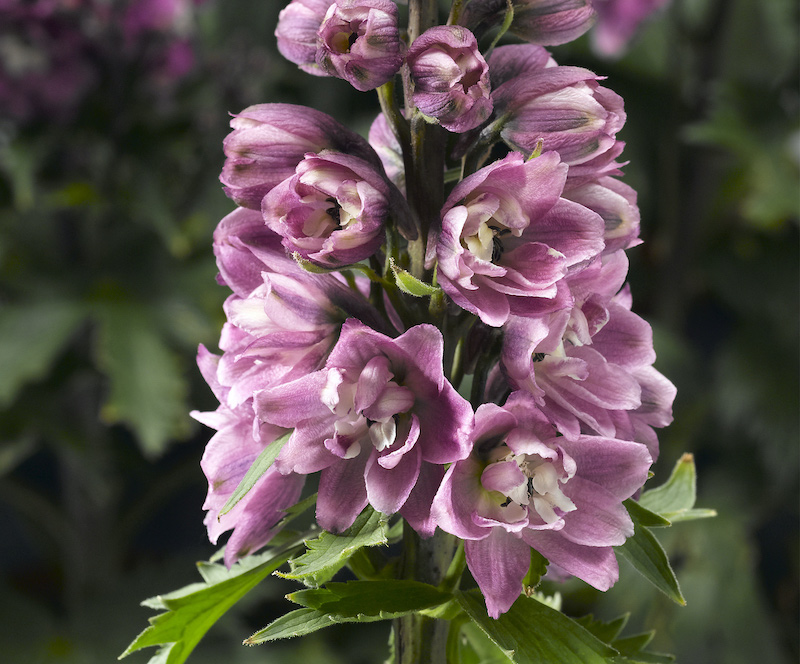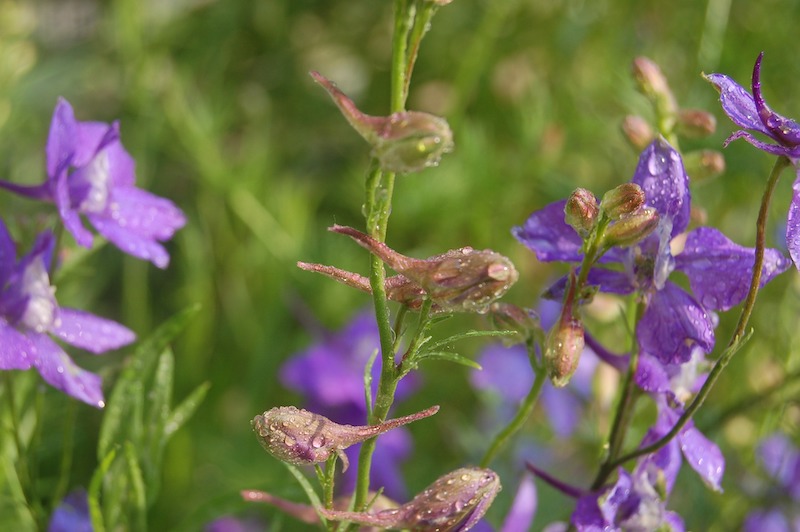Larkspur is an ideal plant to lend a pop of drama to a container garden. Their exceptionally tall flower spikes provide an interesting vertical element that is often missing from the landscape. These heavy feeders are also much easier to feed on a regular basis when grown in pots. Potted larkspur can be placed in either full sun or part shade and gcan be easily moved out of high heat spots when they tend to slow down for the summer.

Planting Larkspur in Pots
Larkspurs are best planted early in the spring for perennial types. The perennials will just be emerging from winter dormancy with roots growing at their most vigorous. Place the pot in an area that will receive 6-8 hours of full sun. In the hotter growing zones, Larkspur benefits from shade during the hottest part of the day, late afternoon. Larkspur tends to be very top heavy when in bloom and needs support for their hollow stems.
Planting them in pots with wide bottoms will help to prevent the pot from tipping over. Also planting in groups helps the plants to support each other as they get taller. Most cultivars of larkspur will need a pot with at least a 12-inch diameter. Excellent drainage is crucial for pot-grown plants. Larkspur appreciate moist soil that is not waterlogged at any time of the year.

Best Soil For Larkspur in Pots
Use an all-purpose potting soil for planting. The pH needs to be close to neutral for good root growth. Adding fertilizers after planting is the best way to control the amount of food for Larkspur. There is no need to mix garden compost into the soil. This often makes the potting soil too heavy for containers. Mulching the top of the pot with compost is a much better technique. The mulch will help to cool the roots and the nutrients will absorb into the soil at every watering.
Caring For Larkspur in Planters
Larkspur are one of the best ornamental plants for enhancing the garden or adorning a deck where they can be appreciated close up. Growing Larkspur in containers is very similar to caring for annuals. Proper fertilizing and watering will ensure their success.
Watering Larkspur in Pots
Larkspur appreciates soil that is evenly moist at all times. This will mean that even in the spring, pots may need daily watering. Larkspur are very quick to droop if the moisture levels in the soil dip too low. Feel the soil to determine when to water it. Soil should feel as moist as a wrung-out sponge. If your climate is rainy early in the spring and summer, then supplemental watering may not be necessary more than once or twice a week. Gardeners growing in climates with dry summers may need to check the need for watering more than once a day at the height of summer.

Fertilizing Larkspur in Pots
Fertilizing pots needs to be done even more often than when Larkspur are planted in the garden. The perennial and annual types of Larkspur should be treated the same. Fertilize every 2 weeks with a diluted liquid fertilizer that supports blooming and strong growth. Nutrients are washed out of potting soil by the action of regular watering. Make sure to taper off fertilizer feedings from late July to mid-August. The plants need time to harden off and prepare for the coming winter.
Winter Care For Larkspur in Pots
Larkspur will survive in pots well during the winter. Excellent drainage is most important. Roots sitting in cold, waterlogged soils make the plant prone to root rot. Cutting back any spent bloom stems is necessary to protect the growth crown from damage over winter. Mulching the top of the pot with straw or garden compost can help to insulate the growth crown.
Wrapping the outside of the pot in layers of burlap will help insulate the roots as well. Moving containers to a more sheltered position is the best protection from winter winds and storms. There is no reason to bring the container indoors to a heated space for the winter. Larkspur are cool weather bloomers that need a period of cold for dormancy.
Growing Larkspur Indoors
Larkspur does not make a good houseplant because it spends the winter in dormancy, with no top growth visible. The plant needs a period of cold for dormancy and to prepare for the coming growing season.
 |
Author Robbin Small - Published 8-22-2022 |
